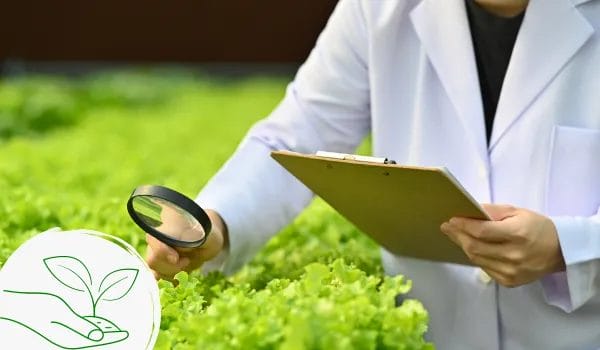What Is Sustainable Harvesting? Everything To Know
Discover the hidden world of sustainable harvesting as we unravel the mysteries behind this essential practice, empowering you with the knowledge to make eco-conscious choices and preserve our planet’s precious resources.
Sustainable harvesting is a sustainable practice that involves the sustainable management of natural resources. It is the sustainable utilization of renewable resources in order to maintain ecosystems, provide necessary products and services, and conserve biodiversity.
Sustainable harvesting considers environmental stability as its primary goal while recognizing economic benefits and social outcomes. This includes using sustainable harvesting activities while maintaining the integrity of natural resources, such as limiting bycatch and conserving essential fish habitats.
Achieving sustainable harvesting requires collaborative approaches among different stakeholders. This includes efforts from communities, governments, scientists, non-governmental organizations (NGOs), and various industries related to fishing, forestry, and more.
These strategies seek to manage natural resources responsibly without any harm to species or destruction of ecosystems. With sustainable harvesting, individuals benefit from long-term use with sustainable yields rather than short-term gains.
Get Your Hand on Your Eco-Friendly Living Starter Guide!
Also read: Is Hot Glue Non-Toxic?
The Link Between Sustainable Harvesting And Ecological Sustainability

The link between sustainable harvesting and ecological sustainability is becoming more and more apparent as humanity navigates a new era of environmental awareness. The concept of sustainable harvesting gives us an opportunity to develop a deeper understanding of our relationship with the natural environment and how our activities impact the way nature works.
The key to successful sustainable harvesting practices is understanding that there are limits on the number of resources we can take from ecosystems without causing permanent damage to their balance and health. By working towards sustainable harvesting, individuals, businesses, and communities can be sure that future generations have access to essential resources while being mindful of their relationship with the environment and plant populations.
The link between proper resource management, decreased environmental degradation, and improved ecological sustainability is evident; sustainable harvesting practices are integral for creating a stable future for all.
Examples Of Sustainable Harvesting Practices

Sustainable harvesting practices include the use of advanced farming equipment to reduce soil compaction, minimize erosion, cross-breeding and selection of crops to grow in extreme climates, and integrated pest control management strategies. Reduced tillage and crop rotation practices help replenish depleted nutrients in the soil while simultaneously providing a home for beneficial insects.
Another example is the promotion of no-till farming that reduces erosion, sequesters carbon dioxide from the air, retains essential water resources and produces high yields with fewer inputs. Finally, sustainable harvesting practices can include practices like crop diversification for resilience and profitability, as well as utilizing companion planting methods to reduce pests and increase production output.
Through understanding and implementing these different examples of sustainable harvesting practices, we can move towards a more resilient agricultural system that benefits both our environment and producers.
More from this site: Silicone Vs Plastic
Is Sustainable Harvesting Effective?

Many believe that it holds promise as a way to reduce the depletion of essential resources like timber and fish in our planet’s ecosystems. The practice aims to ensure that any harvested goods are done so within an ecologically viable manner, with an emphasis on preserving trees and plant population and monitoring the number of products being removed from the environment.
The goal is for such harvesting initiatives to not just temporarily help to replenish what has been taken out of ecosystems but for them to continually sustain themselves through carefully managed processes. This could have a positive impact on both current tree species population losses as well as the threatened biodiversity if done correctly.
However, there is still debate on how effective sustainable harvesting actually is, both environmentally and economically, which requires further research and data analysis before we can confidently know if this approach is helpful in mitigating climate change.
Countries Adopting Sustainable Harvesting
Countries across the world are gradually transitioning to more sustainable strategies for harvesting resources, both renewable and non-renewable. Governments recognize the importance of balancing the state of the natural environment with their developmental ambitions and are introducing legislation that is designed to support the sustainable management of resources.
Countries such as Japan, Canada, Brazil, India, Germany, and China have all adopted certain measures related to harvesting resources sustainably. For instance, Japan has implemented regulations that require private woodland owners to manage sufficient levels of timber for cutting annually, with an annual inventory being required in order to ensure sustainable forestry.
Similar articles: What Are The Benefits Of Energy-Efficient Windows?
Meanwhile, Canada has adopted a number of regulations related to the management of fish stocks for recreational harvesting. Countries are increasingly recognizing that without legislation focused on sustainability and establishing regulations pertaining to harvesting sites and forest health. We may be faced with irreparable damage to the natural ecosystem over time.
Green Lifestyle Tips: The Best Non-Toxic Way To Kill Weeds
Benefits Of Sustainable Harvesting

Benefits of sustainable harvesting include the conservation of wildlife habitats, reduction of pollution, increased efficiency in land production processes, and improved economic stability. Benefits such as conservation could help prevent the destruction of wildlife from over-exploitation, which causes depletion and long-term impacts on species’ population sizes.
Pollution could be reduced due to more efficient use of resources as well as better waste management practices that can reduce air, water, or soil contamination. Additionally, sustainable harvesting would allow for technological advances in production processes, which mean increased efficiency and lower costs leading to greater economic stability.
By taking advantage of the benefits of sustainable harvesting, we can strive towards the aim of preserving natural resources for future use and ensuring that the process is ecologically sound.
Sustainable Harvesting: An Overview
Sustainable harvesting is an important environmental issue that can have a global impact. Put simply, sustainable harvesting is the practice of taking from natural resources such as fish, timber, and plants in a manner that does not deplete or damage the resource for future generations.
It involves conserving resources for their optimal use now and in the future. To put into place sustainable harvesting techniques, a comprehensive understanding of the environment is necessary to ensure proper practices are carried out with minimal environmental harm.
Furthermore, it’s vital to plan practices so that everyone involved collaboratively plays an active role in reducing any potential impacts of destructive harvesting on the environment. When carried out in a responsible way, sustainable harvesting practices can prevent serious consequences like habitat destruction and reduced crop yield.
You may like: Are Orbeez Biodegradable?
Why Choose Sustainable Methods
With all this taken into consideration, it’s easy to see why sustainable harvesting should be a cornerstone of thought when it comes to our relationship with our planet’s finite resources.
By fostering ecological innovation around responsible resource management and adopting best management practices to ensure sustainable harvest control, social costs associated with unsustainable development are avoided.






